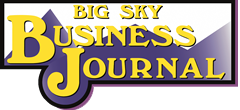The Montana Public Service Commission issued the following statement on the Montana Supreme Court’s decision in Vote Solar v. Montana Department of Public Service Regulation (2020 MT 213).
The federal law at issue in this case, PURPA, strikes a balance between the interests of qualifying small energy producers and ratepayers. It gives qualifying small energy producers the right to sell to utilities, but it also protects utilities and their ratepayers from paying extra for that energy. Under federal regulations, the prices paid by utilities and their ratepayers should not be greater than the prices they would have paid to get energy from other sources. The Commission carefully designed its order according to both the spirit and letter of these federal regulations.
The Court’s opinion faults the Commission for what the Court perceived was an insufficient record to explain elements of the Commission’s order. The Commission disagrees with the Court’s assessment of the record and believes the opinion misstates key facts from the exhaustive record. At its core, however, the Court’s opinion is about the sufficiency of the record—it is not a judgment on the lawfulness of any given policy decision.
The Commission and its staff have always carefully scrutinized each case within the Commission’s jurisdiction. The Commission will redouble its efforts to demand complete, detailed evidence from the parties appearing before it, so that its orders can include exacting explanations of its decisions.
The Commission decided today to ask the Montana Supreme Court to reconsider several statements and conclusions in its opinion that the Commission believes were based on misstatements and misunderstandings of the law and the record. The Commission will elaborate on these issues in a petition for rehearing, which will be filed on or before September 8, 2020.
The Commission regulates private investor-owned natural gas, electric, telephone, water, and sewer companies, certain motor carriers, and oversees natural gas pipeline safety and intrastate railroad safety. The Commission works to ensure that Montanans receive safe and reliable service from regulated public utilities while paying reasonable rates. For more information, visit psc.mt.gov or contact the Commission at 1-800-646-6150. Follow the Commission at Twitter.com/@ MT_PSC or visit Facebook.com/MontanaPSC.
